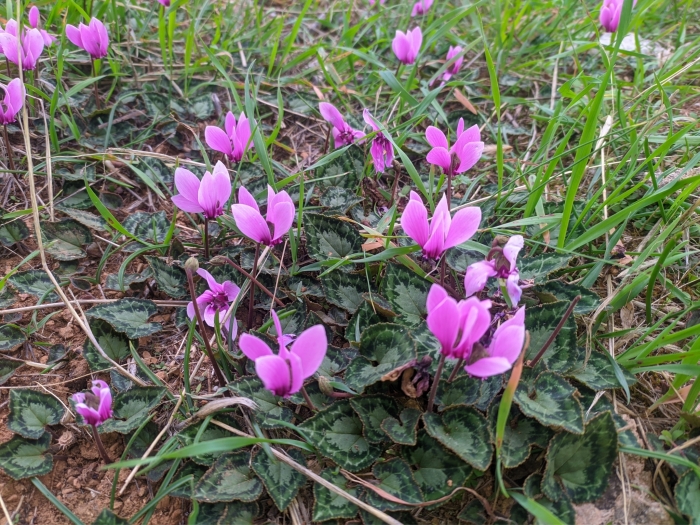Greek Cyclamen
(Cyclamen graecum)
Greek Cyclamen (Cyclamen graecum)
/
/

George Papademetriou
CC BY 4.0
Image By:
George Papademetriou
Recorded By:
Copyright:
CC BY 4.0
Copyright Notice:
Photo by: George Papademetriou | License Type: CC BY 4.0 | License URL: http://creativecommons.org/licenses/by/4.0/ | Rights Holder: George Papademetriou | Publisher: iNaturalist | Date Created: 2021-11-14T09:38:53-08:00 |



























Estimated Native Range
Summary
Cyclamen graecum, commonly known as Greek Cyclamen, is a deciduous perennial herb native to rocky hillsides, shrublands, and open woodlands in Greece, including Crete, as well as southwestern Turkey. It typically grows to a height and width of 0.5-2 feet (0.2-0.6 meters), forming a low-growing, clump-forming mound. Greek Cyclamen is characterized by its heart-shaped leaves that are often marbled with silver and green patterns. It produces a profusion of fragrant flowers in shades of pink, purple, and white during the fall, which are quite showy and rise above the foliage on slender stems.
Greek Cyclamen is valued for its ornamental foliage and charming flowers, which can add color to the garden when few other plants are in bloom. It is often used in rock gardens, woodland gardens, and as an understory plant in shaded borders. This plant prefers well-drained soil and can tolerate dry conditions once established. It is important to avoid overwatering, as this can lead to tuber rot. Cyclamen graecum can be propagated by seed or division after flowering. While generally low-maintenance, it can be susceptible to cyclamen mite and gray mold, especially when grown in humid conditions.CC BY-SA 4.0
Greek Cyclamen is valued for its ornamental foliage and charming flowers, which can add color to the garden when few other plants are in bloom. It is often used in rock gardens, woodland gardens, and as an understory plant in shaded borders. This plant prefers well-drained soil and can tolerate dry conditions once established. It is important to avoid overwatering, as this can lead to tuber rot. Cyclamen graecum can be propagated by seed or division after flowering. While generally low-maintenance, it can be susceptible to cyclamen mite and gray mold, especially when grown in humid conditions.CC BY-SA 4.0
Plant Description
- Plant Type: Herb
- Height: 0.5-1.5 feet
- Width: 0.5-1.5 feet
- Growth Rate: Moderate
- Flower Color: Pink, Purple, White
- Flowering Season: Fall
- Leaf Retention: Deciduous
Growth Requirements
- Sun: Full Sun, Part Shade
- Water: Low, Medium
- Drainage: Medium
Common Uses
Bee Garden, Deer Resistant, Fragrant, Low Maintenance, Potted Plant, Rock Garden, Showy Flowers
Natural Habitat
Rocky hillsides, shrublands, and open woodlands in Greece, including Crete, as well as southwestern Turkey
Other Names
Common Names: Hardy Cyclamen, Griechisches Alpenveilchen
Scientific Names: , Cyclamen graecum, Cyclamen cyprograecum, Cyclamen gaidurowryssii, Cyclamen velutinum,
GBIF Accepted Name: Cyclamen graecum Link